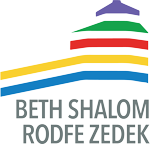Holy Scrollers Preview
Parashat Naso
Numbers 4:21 – 7:89
Rabbi Rachel Goldenberg
Shabbat Shalom everyone! Before sharing my Torah preview with you, I want to remind you that the festival of Shavuot is coming (Tuesday night June 7th through Wednesday June 8th) encourage you to come to our Erev Shavuot services and study session (also called a “Tikkun”. See information below:
Erev Shavuot service and Tikkun Leil Shavuot study session
Tuesday June 7th
Service at 7pm, Tikkun 8:30-10pm
On Erev Shavuot, the festival which celebrates the giving of the 10 Commandments on Mount Sinai, we will begin with a special evening service with moments of extended contemplation on the themes of the prayers. This approach opens up the meaning of the traditional prayers and allows us to connect to them in new ways. We will hear the 10 Commandments read from the Torah, and through a Bibliodrama experience we’ll have a chance to imagine what it might have been like to be at Sinai.
At 8:30pm we will reconvene for an experiential study session led by Rabbi Goldenberg, Belinda Brennan and Peg Palmer (after noshing on delicious dairy treats). According to a Chasidic tradition, the only sound that the Israelites heard at Mount Sinai was the sound of the letter “Alef,” which is the first letter of the first word of the Ten Commandments. Through text study, meditation and chant we will try to find our own answers to the question, “What is the sound of the letter ‘Alef’?”
Please feel free to join us for all or part of the evening.
Shavuot morning service with Yizkor will take place Wednesday June 8th at 8AM.
Now for our preview:
The first half of Parashat Naso contains mostly legal material, concerning “circumstances when one’s place in the community is in question because of unusal behavior” (Etz Hayyim commentary). Categories include the person who has taken a Nazirite vow and the “sotah,” who is a woman who is suspected by her husband of having committed adultery. The “sotah” is required to undergo a ritual ordeal in order to exonerate her or punish her. The second half of the portion deals with gifts that the chiefs of each tribe brought to the Tabernacle on the occasion of its dedication.
We will focus most of our time on these categories of the “sotah,” the woman suspected of adultery by her husband, and the “nazir,” who has taken a vow to abstain from wine or other grape products. We’ll look at some articles on this parasha included in The Torah: A Women’s Commentary. One article by Judith Hauptman gives us an overview of how later generations, rabbis in the time of the Mishnah and the Talmud, interpreted and dealt with the “sotah.” Hauptman also gives examples from Jewish history of actual women who took Nazirite vows.
The other is an essay written by a friend of mine, Lisa Grushcow, on how the Talmudic rabbis’ treatment of the “sotah” can give us insight into their view of change, and how their view of change differs from ours today.
I look forward to exploring our questions as they arise!
